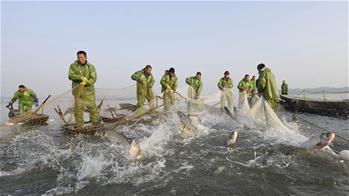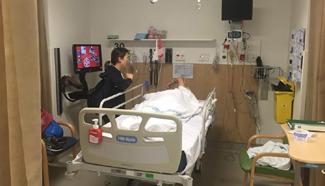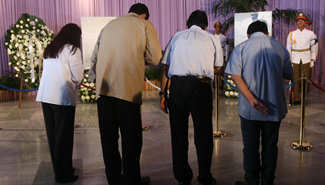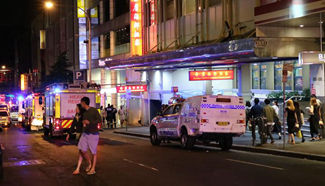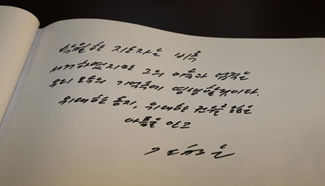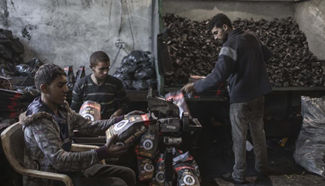
Photo taken on Nov. 29, 2016 in Geneva, Switzerland, shows the new guidelines on HIV self-testing published by World Health Organization (WHO). Ahead of World AIDS Day on Dec. 1, the World Health Organization (WHO) released new guidelines on Tuesday on HIV self-testing to improve access to and uptake of HIV diagnosis. (Xinhua/Xu Jinquan)
GENEVA, Nov. 29 (Xinhua) -- Ahead of World AIDS Day on Dec. 1, the World Health Organization (WHO) released new guidelines on Tuesday on HIV self-testing to improve access to and uptake of HIV diagnosis.
According to a new WHO progress report, lack of an HIV diagnosis is a major obstacle to implementing the organization's recommendation that everyone with HIV should be offered antiretroviral therapy (ART).
The report revealed that more than 18 million people with HIV are currently taking ART, and a similar number is still unable to access treatment, the majority of which are unaware of their HIV positive status.
Today, 40 percent of all people with HIV (over 14 million) remain unaware of their status. Many of these are people at higher risk of HIV infection and often find it difficult to access existing testing services.
"Millions of people with HIV are still missing out on life-saving treatment, which can also prevent HIV transmission to others," said Margaret Chan, WHO director-general. "HIV self-testing should open the door for many more people to know their HIV status and find out how to get treatment and access prevention services."
HIV self-testing means people can use oral fluid or blood finger pricks to discover their status in a private and convenient setting. Results are ready within 20 minutes.
HIV self-testing is a way to reach more people with undiagnosed HIV and represents a step forward to empower individuals, diagnose people earlier before they become sick, bring services closer to where people live, and create demand for HIV testing.
Between 2005 and 2015, the proportion of people with HIV learning of their status increased from 12 percent to 60 percent globally.
HIV testing coverage remains low among various population groups, especially among "key populations" and their partners -- men who have sex with men, sex workers, transgender people, people who inject drugs, and people in prisons -- who comprise approximately 44 percent of the 1.9 million new adult HIV infections that occur each year.




